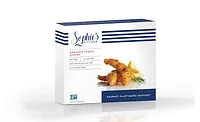TECH FLASH
Case history: Science-based ozone system improves seafood processor’s peace of mind
In addition to food inspectors, customers often ask for bacteria counts.

“It’s not just food inspectors who track bacteria counts anymore,” says Lynn Rayner, quality manager for Acadian Fishermen’s Cooperative (AFC) on Prince Edward Island, Canada. “Our customers now regularly ask for those reports as well. Our low counts give our customers peace of mind.”
One qualitative measure AFC has incorporated is Ozone International’s proprietary process to reduce bacterial micro counts. AFC’s customers aren’t the only ones who appreciate ozone’s benefits. “I sleep better knowing we have lower bacteria counts using ozone,” says Jeff Malloy, AFC general manager/CEO.
AFC, owned by approximately 95 member fishermen, has been using an Ozone International system for three years. One of the largest processors of lobster on the island, AFC also ships frozen scallops, crab and special custom packs to domestic and international markets.
Many countries, including the US, have strict requirements or zero tolerance for certain types of bacteria. Ozone controls pathogens throughout the facility, and that has a direct impact on earnings.
“We have white conveyor belts in our plant, and we’ve found that they stay whiter when sprayed with ozone-infused water,” explains Rayner. “We also use it to clean our floors. They aren’t as slippery as they once were. That’s safer for our employees.” Using ozone also guards against residue buildup.
“Some of our managers were doubters at first, but now they comment on how clean the stainless steel tables are,” says Rayner.
Product quality and food safety advantages, plus the bottom line benefits, have led North American seafood processors like Acadian Fishermen’s Cooperative to utilize ozone to reduce bacteria counts and maintain a cleaner, fresher facility.
Looking for a reprint of this article?
From high-res PDFs to custom plaques, order your copy today!







